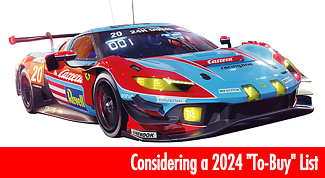For slot racers who like to focus on the scenic aspects of their track, tunnels have always been one of those things that can really add a lot of visual impact. Some of the best artists I have seen on the various forums manage to make the creation of tunnels look easy; in truth, what we are seeing is always the result of careful planning and thoughtful construction.
 |
| Everybody likes tunnels, right? |
Often the temptation is to build a structure of some sort and mound a plaster effect over the surface, creating something that is supposed to represent a mountain. Depending on the size, design, proportions and materials, the end result may look good -- or it may not. Before starting, there are lots of things to consider:
1) Is the track going to pass through the tunnel? If so, will it be a straight section, or a curved section? A straight section is always preferred, because cars often de-slot on curves, and the combination of a curve and a blind spot in the tunnel will probably increase your marshaling duties.
2) Would a mountain or tunnel look right on your track? If you're doing a hilly or mountainous Alpine region, sure. Make sure your hill or tunnel feature fits in with the overall landscape of your track. Also - LOOK AT NATURE - you should try to ensure your land forms try to resemble something you'd actually see in the natural world.Think - if an engineer was building a track or road in that spot - would they actually create a 50-foot tunnel? Or would they just excavate or dynamite the hillside to open it up completely?
3) Always think of driver views, marshaling and ease of access. For long tunnels on a straight, some track builders have used an avalanche tunnel, which is semi-open at one side, allowing drivers to see the cars and retrieve them without too much trouble, if needed. It's a smart approach.
 |
| A real-world example of an avalanche tunnel |
4) Don't think you need to run the track through a tunnel to get the visual effect. This was something I saw many years ago, where the builder was creating a mountain/hill track but did not want to "force" a tunnel into a limited space. Since it utilized a road circuit anyway, he introduced a tunnel at an "intersection" that fed onto the track. It provided the illusion and interest of a tunnel without having to compromise on driver views--and it looked natural. I used this approach on my last track, where it blended into the landscape smoothly.
 |
| I used a tunnel like this on my old track - it blended right in and looked natural. |
In short, tunnels can add a lot of interest if designed thoughtfully and made to look as realistic as possible.Overpasses can involve some of the same types of challenges, but they are often necessary (as a matter of track design) and can be kept to a minimum with good planning. The key is to look at what's out there in real life and try to design accordingly.









No comments:
Post a Comment